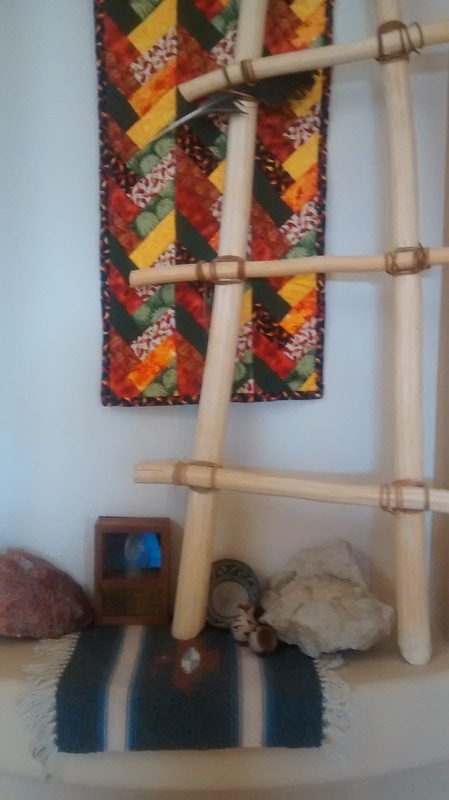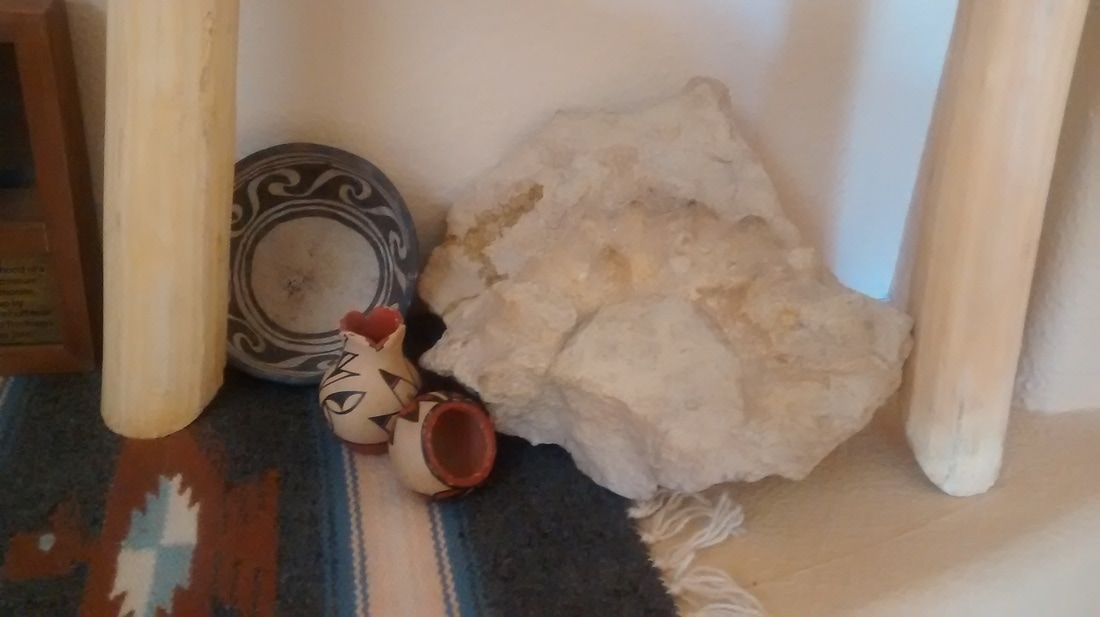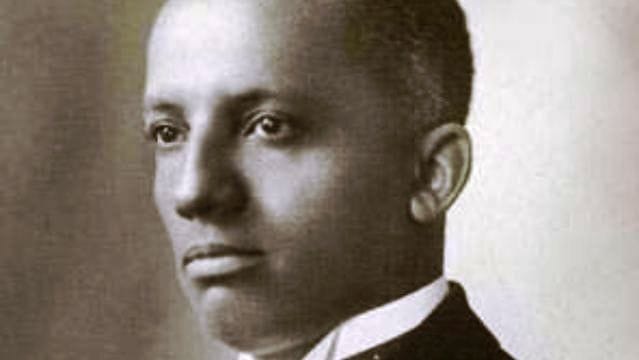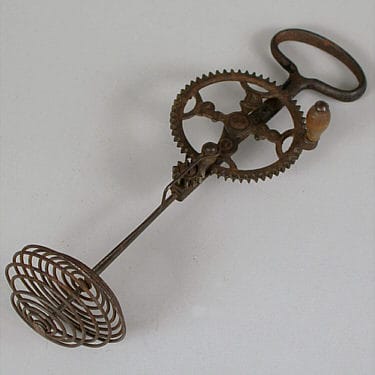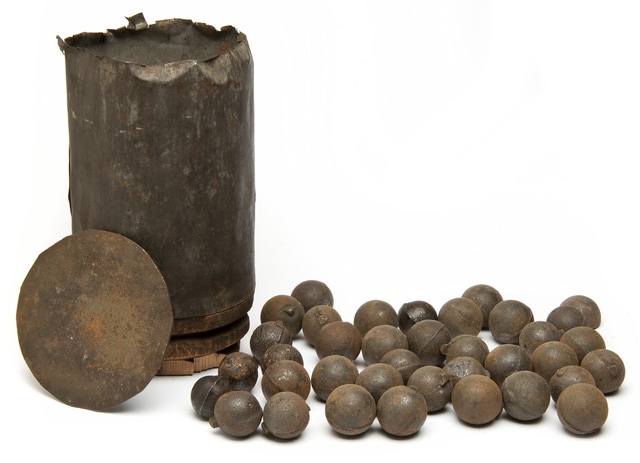There's a small nicho in the entryway of my house. It's filled with things that remind me of the great state of New Mexico, its people and its history and distant past. I made the quilt that hangs on the nicho's back wall. The fabrics have pictures of chili peppers and cacti, and the colors remind me of a New Mexico sunset. My youngest son made the ladder when he was learning how to lash sticks together with the Boy Scouts. It is similar to the ladders used in Pueblos and cliff houses. If you want to climb one, a great place to visit is Bandalier. |

Nestled at the feet of the ladder is a decorated gourd bowl and two small pots that my husband and I received as wedding presents. I think they are from the Jemez Pueblo. There is also a rug that my husband's secretary gave him long ago. Many people assume that a rug made in New Mexico would be made by an Indian, and they'd be wrong. The Spanish brought sheep and weaving to the Southwest. Some Hispanic shops, such as Ortegas, have been weaving for hundreds of years.
My greatest treasures are older than the pots and gourds. My oldest son made the display case that holds an operculum that I found a few miles away from the site of the Robledo trackway, in the southern part of the state near Las Cruces. The operculum came from an ammonite that swam in the ocean that covered New Mexico during the Cretaceous era. Look back at the small pots in the picture above and you'll see a fossilized ammonite from that same sea. I didn't find that fossil, but know if was found in Texas.
My greatest treasures are older than the pots and gourds. My oldest son made the display case that holds an operculum that I found a few miles away from the site of the Robledo trackway, in the southern part of the state near Las Cruces. The operculum came from an ammonite that swam in the ocean that covered New Mexico during the Cretaceous era. Look back at the small pots in the picture above and you'll see a fossilized ammonite from that same sea. I didn't find that fossil, but know if was found in Texas.

I also have a large chunk of petrified wood in my nicho to remind me that this desert was once forested. This chunk is from Arizona's Petrified Forest, but I have picked up smaller pieces in many arroyos in New Mexico and in the dry bed of the Rio Puerco west of Rio Rancho. Probably the most spectacular place to see petrified forest is in the Bisti Badlands near Farmington.
New Mexico hasn't always been the desert that it is today, but it's always been an interesting place. I've got the mementos to prove it.
Do you have any New Mexico mementos?
New Mexico hasn't always been the desert that it is today, but it's always been an interesting place. I've got the mementos to prove it.
Do you have any New Mexico mementos?

